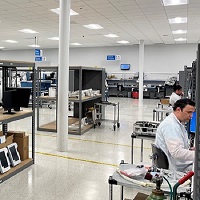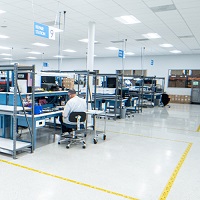
De-Risking Your Healthcare Service Supply Chain
Current Market Dilemma
Hospitals, clinics, and laboratories within global healthcare systems continually source cutting edge and industry-leading healthcare devices from manufacturers worldwide. Such a global reach allows healthcare device manufacturers to commercialize products to a wider range of clients and ultimately helps improve medical outcomes for more patients throughout the world. Customers more and more are gravitating towards and pledging loyalty to brands assuring predictable outcomes when their devices are used to treat patients. In turn, devices must be made to ensure maximum uptime and consistent quality to demonstrate their reliability and effectiveness for brand loyalty to prevail.
However, logistical issues with service supply chains can be an obstacle when healthcare manufacturers commercialize within markets where they have no regional presence. From device installation and clinical training to routine maintenance of the device when issues arise, companies can struggle to offer their clients quick turnaround times and leading customer service, ultimately costing them business as well as impacting their bottom line and, most importantly, brand perception. As such, healthcare manufacturers face a difficult decision: allocate additional capital and time to develop the resources and infrastructure required to handle such tasks quickly, or limit the regions in which they commercialize their devices.
Healthcare Device Service Supply Chain Risks
Service supply chains often face unpredictable challenges and do not always get the attention they deserve. Often healthcare markets are B2B and as such are generally considered industries with high complexity products manufactured in lower volumes. Such products not only require a solid infrastructure for device serviceability, but also necessitate a reliable service supply chain that follows proper regulatory and safety measures. The infrastructure and resources required to support healthcare device manufacturers may involve specific quality and regulatory processes to effectively service products in the field or in designated service centers, causing an added level of complexity that is not as ubiquitous in major markets. As a result, companies may leverage distributors or source several providers in the service supply chain to install and maintain their products in the field.
However, a service supply chain comprised of distributors or multiple service providers comes with unique obstacles. For instance, with distributors, there is a likelihood that repair and product reliability data does not propagate back to the device manufacturers, leaving them blind to essential product statistics. In the case of service providers there may be challenges with creating a consistent service experience since many are country specific providers and tend to be fragmented. Furthermore, not all distributors or providers in the service supply chain may adhere to stringent quality management systems or regulatory guidelines, resulting in inconsistent service execution and a lack of continual improvement. Lastly, the time and resources required to manage and oversee a complex service supply chain without the necessary quality accreditations place an extra burden on the healthcare manufacturer to simply oversee the service supply chain components and ensure they work together effectively and within regulations.
Add in extenuating factors, and the need for meticulous oversight of the service supply chain increases further. As markets saw first-hand this past year, natural disasters - from a pandemic to extreme weather events - can negatively impact one component of a complex service supply chain. In addition, other disturbances, such as social and political issues within a country, can hinder a service supply chain from flowing smoothly.
As such, a high market demand exists for resiliency and seeking out a reliable, consolidated, regulatory-compliant, global service supply chain design to mitigate these issues.
Service Supply Chain Solution: End-to-End OEM Collaborator
Device manufacturers may often find themselves with bandwidth constraints and cannot always tackle these issues alone. To address market demand, it is imperative to identify partners who will offer resource sharing of their global network to help their manufacturer collaborators break into markets beyond their immediate region. Seeking out industry leaders with experience in service supply chains and comprehensive end-to-end solutions, enables the device manufacturer to reach markets throughout the globe as well as strengthen existing markets in order to increase revenue and profits. Such industry leading collaborators offer:
End-to-end collaborators partner with device manufacturers to help the latter scale quickly and cost-effectively by utilizing the partner’s existing service supply chain ecosystem.
Case Study: A Successful OEM Service Supply Chain Collaboration
A manufacturer of cardiac mapping and navigation technology sought to expand their market reach while still ensuring next-day delivery for their electrophysiology devices, no matter the fluctuation in daily demand. Additionally, the company wanted to assess alternatives to their internal service center capabilities to focus more on customer experience, ensuring their cardiac mapping systems were being serviced in a timely fashion. Importantly, they sought a partner who could accommodate the highest level of quality control and regulatory compliance, given the critical nature of their systems.
With this end in mind, the OEM collaborated with a global service support partner, Quest International. The partner leveraged their existing global warehouses and regulatory compliant technicians to accommodate next-day delivery of devices. As well, the partner provided seamless and timely servicing of devices. As a result of the collaboration, the OEM increased the efficiency of their returns management turnaround by servicing 30% more products than their previous volume, all while upholding their high-quality standards. The partner’s turnkey service and logistics offering enabled the OEM to maintain next-day delivery across the country — a crucial requirement for the OEM’s customers. Importantly, the OEM did not have to invest time nor resources to create this improved infrastructure themselves; rather, they leveraged the partnership’s existing network for immediate expanded area of operation without sacrificing their customer service, regulatory compliance, or turnaround times.
Identifying a Reputable Service Supply Chain Partner
Device manufacturers seeking a reliable partner to de-risk their service supply chain need to vet potential partners. In particular, device manufacturers should look for a partner who has:
Finding the most trusted, experienced, and reputable partner makes all the difference. A reliable partner can de-risk a healthcare manufacturer’s service supply chain and help them expand to a global scale quickly, cost-effectively, and without compromising their brand integrity. To learn more, feel free to reach out to Quest to address challenges you may be facing with your service supply chain.












